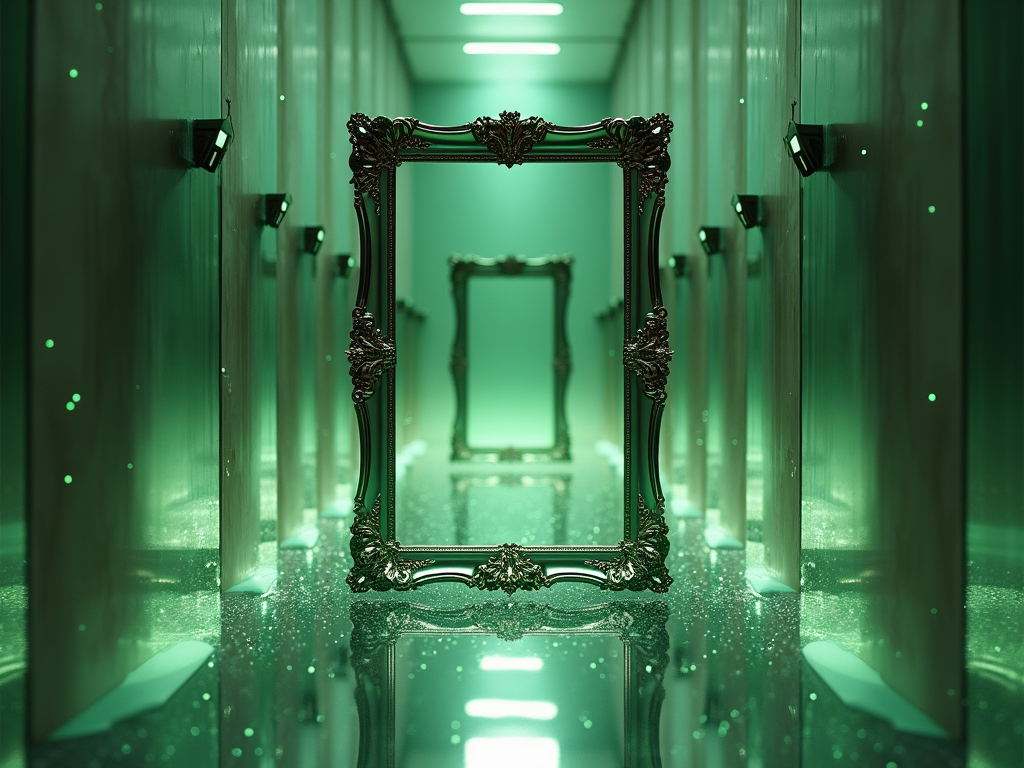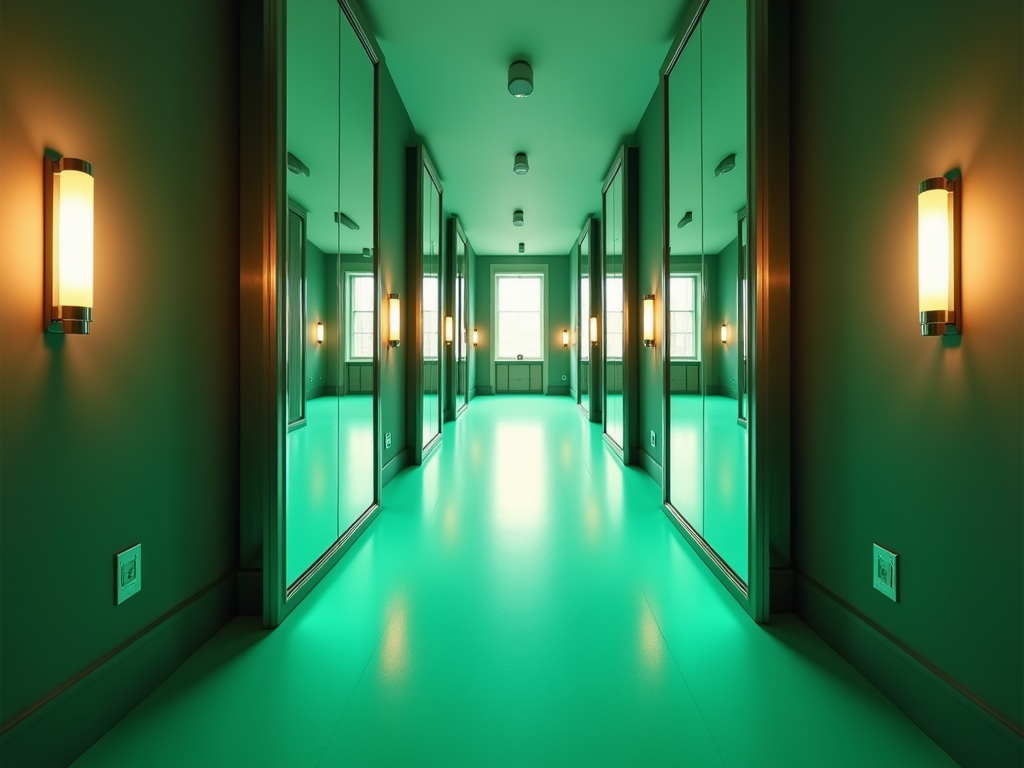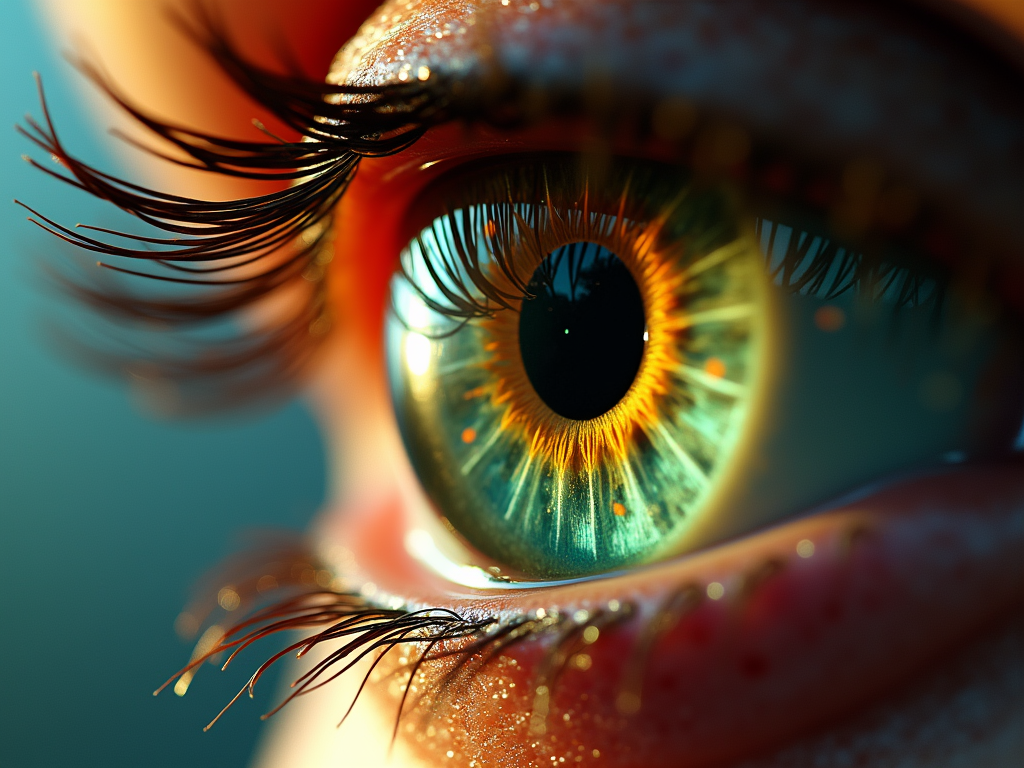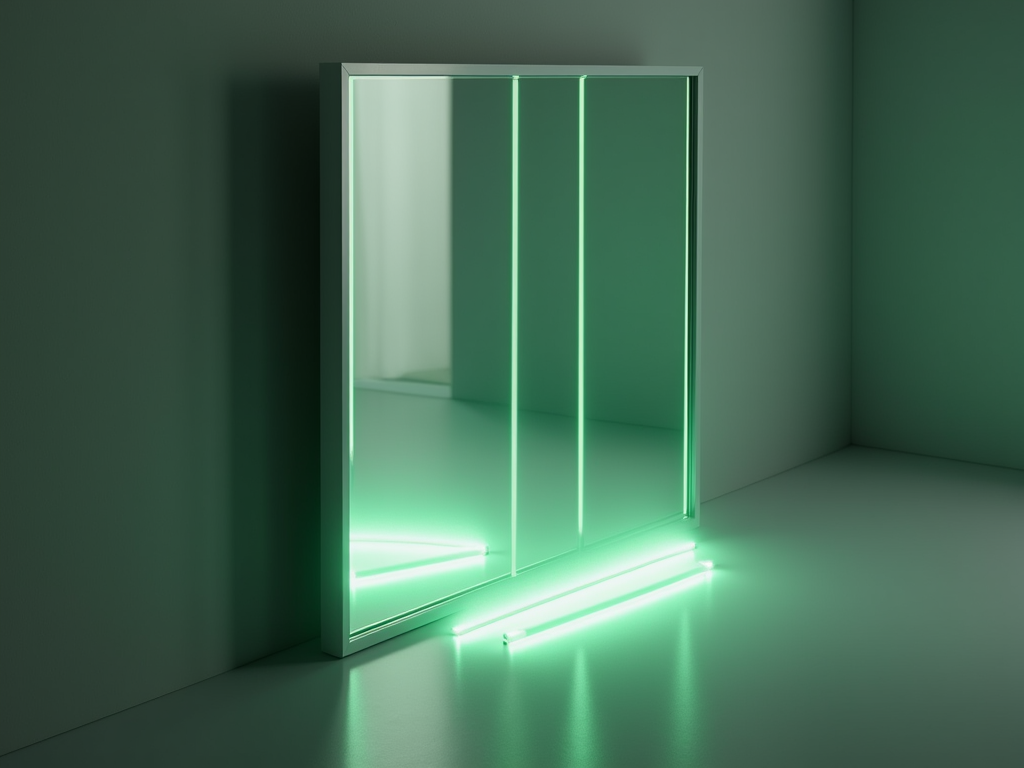
Key Takeaways
- Mirrors reflect the majority of visible light, appearing “neutral” at first glance, though they reflect green light slightly better than other wavelengths.
- The green tint owes its existence to the iron content in float glass commonly used in mirror production. This tiny imperfection appears uniform but impacts how light behaves.
- Placing mirrors opposite each other amplifies this hue through an infinite loop of reflections, making the green shade far more obvious.
- Human vision plays a significant role, as our eyes are naturally more attuned to green wavelengths, heightening this tint’s visibility.
- Rather than being a definitive “green,” mirror coloration emerges from the combined effect of its physical properties and how we interpret light.
Don’t let that faint hint of green fool you—it’s not a defect. It’s a subtle design feature shaped by nature, physics, and manufacturing. If you ever witnessed the infinity reflection effect, you’ll have seen this tint at work, endlessly multiplying itself. Mirrors are more than reflective surfaces; they’re fascinating representations of light and vision dancing together.
Why Mirrors Seem Like a Portal to Another World
Mirrors feel like magic, don’t they? They reflect everything with such clarity that they seem almost invisible—a perfect copy of reality frozen in glass. Technically speaking, mirrors reflect all colors of light that hit them, which is why they appear “colorless.” But they’re not entirely neutral. If you look closely, particularly along the edges, mirrors can reveal a faint green tinge. This happens because they reflect green light just a bit better than others.
It’s not something most would notice unless pointed out, but this slight imperfection is what makes mirrors so fascinating. They’re not only practical but mysterious, quietly hinting at their own unique “color.” Whether you’re admiring a handcrafted piece or adding a custom frame to yours, every mirror holds this surprising twist on perception.
The Science Behind Reflection and Mirrors
Reflection happens when light bounces off a surface, adhering to the principle where the angle of incidence equals the angle of reflection. But what makes mirrors reflect so perfectly? It comes down to their construction. A mirror starts with a glass substrate as the foundation, chosen for its smoothness and rigidity. Manufacturers then apply a thin reflective layer, typically of silver or aluminum, to the glass’s back. This metallic layer is what ensures the mirror reflects light in a way that looks true to reality. A protective coating might also be added on top to prevent scratches or corrosion.
What sets mirrors apart from most objects is the type of reflection they use. Ordinary objects reflect light diffusely, scattering it in all directions due to their uneven surfaces. This is why you don’t see your face in a painted wall or a piece of paper. A mirror, however, is specifically designed for specular reflection, where light rays bounce off in a smooth, predictable manner, preserving the original image.
Some innovations are refining this process even further. Dielectric mirrors, for instance, rely on layers of non-metallic materials that manipulate light via interference instead of simple reflection. These are often used in high-precision optical devices, offering even greater clarity than traditional mirrors.
Have you ever wondered how objects like picture frames can help highlight mirrors’ reflective beauty? Pairing them together can elevate the look of your decor. Learn more about crafting a frame here.

What’s Up With That Green Hue?
Mirrors aren’t completely color-free. Most of them reflect nearly all colors equally, but subtle imperfections give them a faint greenish tint. This slight green tone comes from the manufacturing process, particularly something called the float glass process. During this process, molten glass floats on a bed of molten tin, creating a flat, smooth surface. However, the iron oxide in the glass interacts with light, subtly influencing how it reflects. It’s minimal, but it’s enough to show up under the right conditions.
Ever walked down a hallway with mirrors placed opposite each other? If you have, you might have noticed the greenish hue becoming more pronounced the deeper you look into the reflection tunnel. That’s because with every bounce of light between the mirrors, the green tone becomes slightly amplified. It’s like stacking pieces of tinted glass on top of each other—each layer intensifies the effect.
The lighting in a room can also affect this perception. Natural daylight might make the hue seem less noticeable, while artificial light can add to the tint, creating a stronger impression of green. Mirror tunnels in funhouses or art installations are great examples where this effect really stands out.
If the idea of constructing something stylish with mirrors sparks your interest, check out some practical ways to use these reflections by learning how to make a picture frame. Incorporating mirrors can add a modern twist to any room!

How Human Eyes Play a Trick on You
Your eyes are wired to focus on certain colors more than others. Specifically, they’re most responsive to green light, peaking at around 555 nanometers in the visible spectrum. This isn’t random—it’s due to the three types of color receptors (cones) in your retina. The cones are tuned to red, green, and blue, with the green cones taking center stage when it comes to sensitivity.
Mirrors reflect all visible light equally, but because of this green sensitivity in your vision, the faint green tint inherent in most mirrors stands out more. It’s almost like your eyes give green a little extra attention, emphasizing the subtle hue in ways you might not consciously recognize.
Here’s something fascinating—this sensitivity isn’t the same for everyone. People with certain forms of color blindness, like red-green color blindness, process light differently. Depending on their specific condition, the green tint that looks so prominent to others might seem muted or less distinct.
Even in people with typical vision, other structures in the eye, like rods (which pick up light under low-light conditions), don’t contribute to color perception directly but still play a role in how effectively you see reflection in dim environments. So next time you glance at a mirror, remember—it’s not just the mirror’s chemistry making green pop; it’s also your biology adding a twist. Speaking of reflections, if you’re curious about adding decorative flair around reflective surfaces, you might explore how to make a picture frame to complement your decor.

Are Mirrors Truly Green?
Mirrors don’t technically “have” a color. They reflect nearly all visible light wavelengths, which is why you see your reflection instead of a particular hue. However, imperfections in real-world mirrors and how our eyes perceive light can create a slight greenish effect. This is more noticeable when mirrors are placed edge to edge in an infinity setting, amplifying that subtle tint.
The greenish glow comes from the material used in manufacturing. Most mirrors use a layer of silver or aluminum for reflectivity, backed by a protective coat of paint or lacquer. These materials reflect green wavelengths just a bit more efficiently than others, which makes green the tiny bias you might notice. It’s not something you’re likely to observe unless you’re paying close attention or involved in scientific experiments.
Human vision also plays a role. Our eyes are particularly sensitive to green light compared to colors like red or blue. This interaction between biology and physics means the greenish tint, although faint, has a better chance of standing out to us.
If you’re thinking about mirrors for decorative purposes, you might consider creating a stylish frame that complements the room instead of worrying about its faint color. Check out these tips on how to make a picture frame, which can turn a simple mirror into a design feature.

Sources:
Optical Society of America publications
Research papers on human color perception
Information on mirror manufacturing processes from glass manufacturers
Britannica on “Float Glass”
Insights on mirror reflection experiments from MIT researchers
